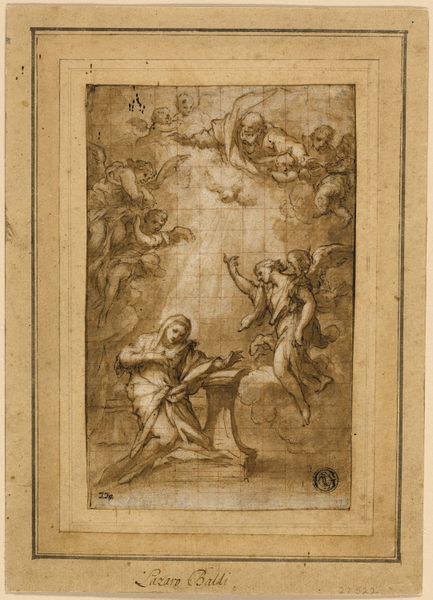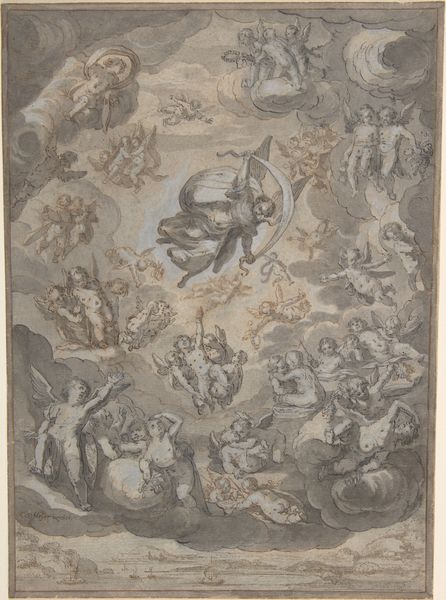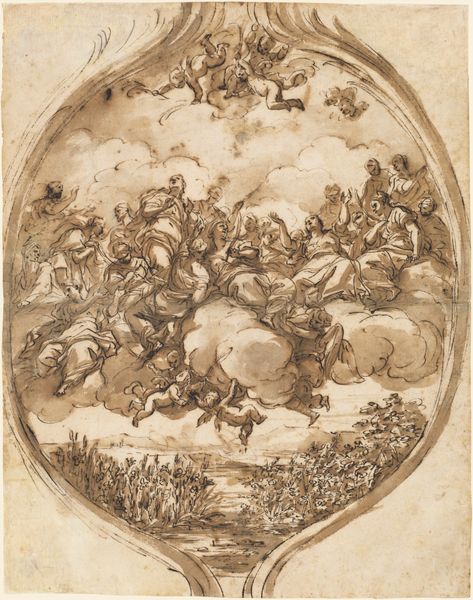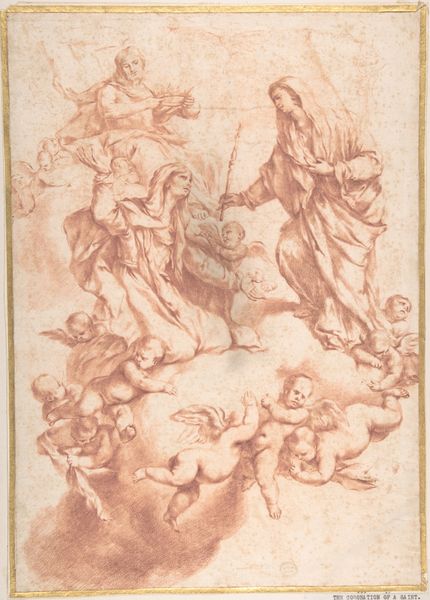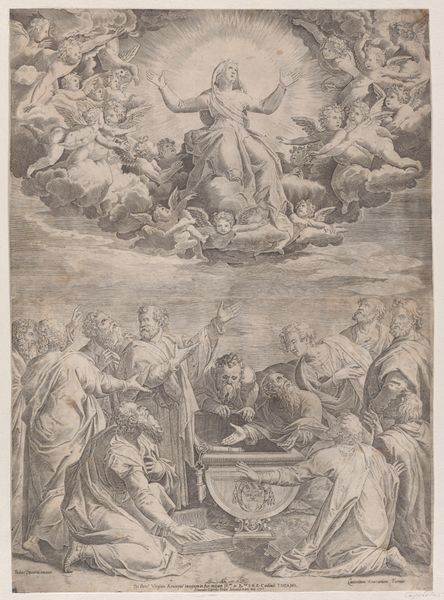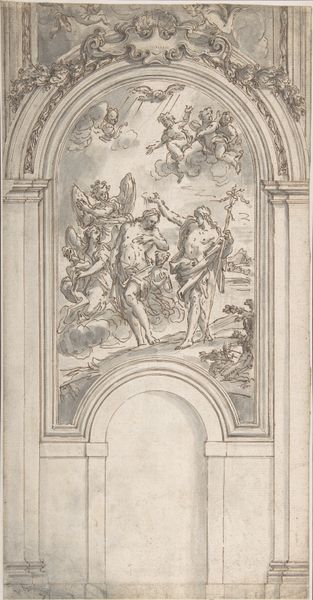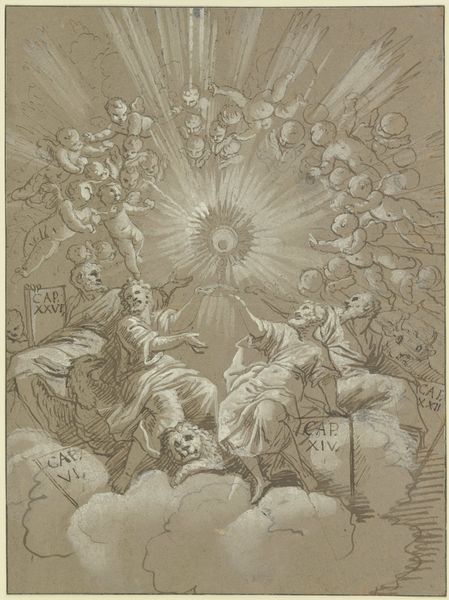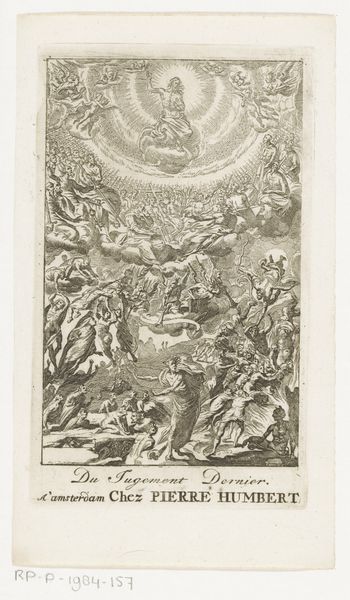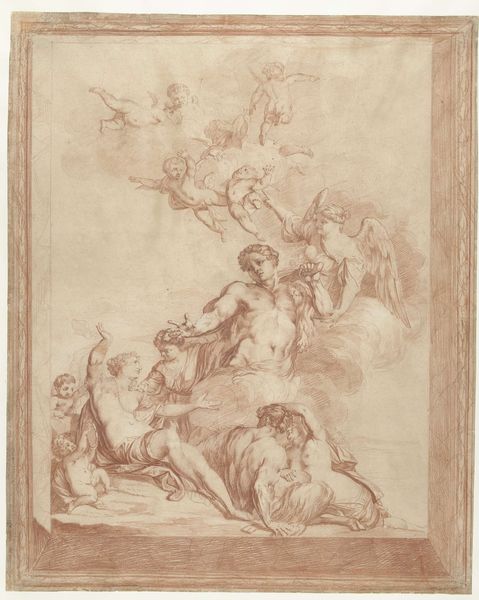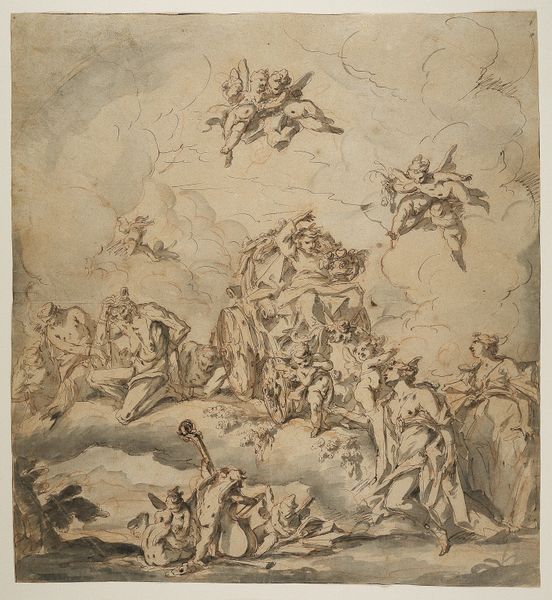
drawing, print, paper, ink
#
drawing
#
allegory
#
baroque
#
ink painting
# print
#
figuration
#
paper
#
ink
#
history-painting
#
watercolor
Dimensions: 15-9/16 x 12-5/8 in. (39.5 x 32 cm)
Copyright: Public Domain
Curator: This is "The Heavenly Host," a drawing in ink on paper, dating from 1600 to 1700, currently held here at the Metropolitan Museum. Editor: My first impression is one of dynamic serenity, if that’s not too much of an oxymoron. The circular composition, all those figures swirling upward... It gives a real sense of Baroque drama, but it’s rendered in these soft, sepia tones, which calms the frenzy. Curator: Precisely. The use of ink wash, typical of drawings from this period, creates subtle gradations of tone that soften the overall image. Consider the source of the paper itself: linen or hemp rags, pulped and pressed, then sized to receive the ink. Each step requiring labor, from gathering the raw materials to the skilled hand executing the drawing. Editor: What strikes me are all the layers of symbolic weight loaded onto those figures. God the Father at the apex, gestures of benediction...then all those ranks of angels and cherubs, ascending toward the divine. You can almost trace centuries of theological doctrine embedded in the visual language here. Curator: I'd argue the method by which this imagery proliferated is critical. Drawings like this were not meant to be solitary artworks, but functional ones to be replicated and distributed widely, often for devotional practices. Editor: So, we can interpret the work itself as less an act of artistic creation and more as a production for faith consumption. Do you think the very act of replication diminishes its spiritual aura? Curator: Not necessarily. Consider the workshops that were established at that time: a network of collaboration which involved many laborers contributing towards similar ends. Editor: Even if mass-produced and distributed as you argue, there’s still this compelling visual language at play. Each gesture, each gaze directs the viewer's eye. It's a complex theology rendered accessible through visual form. Curator: Ultimately, the success of this work lies in how seamlessly material constraints—the cost of materials, labor divisions—interact with these devotional intentions. Editor: It’s intriguing to consider how an object conceived to communicate unchanging truths could itself be so deeply rooted in specific times. Curator: It all becomes another material expression, and record, of Baroque ideals and craft production, simultaneously.
Comments
No comments
Be the first to comment and join the conversation on the ultimate creative platform.
